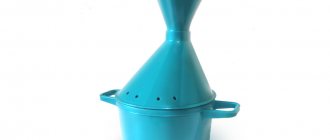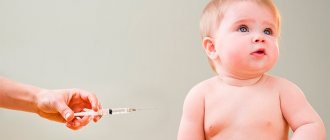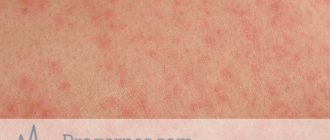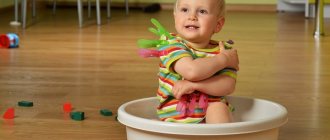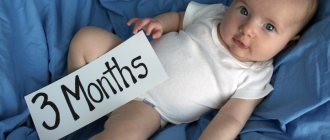Causes of discomfort
The reasons for choking after running lie in the wrong approach to training.
You cannot immediately start long-distance running if your body is not physically prepared. Undeveloped endurance becomes a stress factor for the functioning of the respiratory system. They react to this by coughing. By observing proper breathing, runners achieve high results. Saturating the body with oxygen gives it the strength to work with 100% efficiency. When running, it is important to inhale evenly through your nose and exhale through your mouth. This way the air heats up and does not irritate the respiratory tract. Intermittent breathing causes shortness of breath.
Coughing after running is a typical phenomenon for smokers. With constant training, they experience discomfort. The bronchi and lungs are contaminated and therefore do not work at full capacity. Even everyday activities provoke coughing in a smoker.
Another reason for discomfort after a run is untreated colds. The body still needs to regain its strength. In 40% of cases, acute respiratory viral infections cause irritable bronchi syndrome - excessive sensitivity to environmental factors. Bronchial hyperactivity requires diagnosis and treatment. When neglected, it causes asthma.
Sometimes a cough occurs due to environmental conditions: the air outside is too cold or polluted. If a person runs in the gym, shortness of breath appears due to stuffiness or cheap paintwork in the room.
The causes of coughing after running in a child are usually due to an overreaction to environmental factors. At the same time, the pathological process is easy to miss. When a child coughs after physical activity outside in cold weather, there is no danger.
Cough as a symptom of the disease
In some cases, cough during physical activity in a child or adult is a consequence of the disease. Only a doctor can confirm or refute this during diagnosis. There are special tests to determine the cause of cough. They determine whether it is caused by running.
If breathing is normal when moving, but a severe cough occurs after running, an exacerbation of a chronic disease occurs. The pathology concerns the heart or respiratory organs. The reasons also lie in a viral disease, bronchitis, pneumonia or pleurisy.
Among the possible pathologies that cause coughing while running are:
Cough can be a symptom of many diseases
- Bronchitis caused by pathogenic bacteria provokes the discharge of purulent sputum.
- Bacterial pneumonia – causes dry cough, shortness of breath, tingling in the side.
- Heart failure - characterized by poor circulation, shortness of breath and dry cough.
- Lung cancer and tuberculosis.
- Bronchiectasis.
- Cardiopulmonary failure - shortness of breath, blueness of the limbs and face, and inability to take a breath.
Bronchial asthma is a known disease in which sports training provokes coughing.
It is important to be able to recognize the first signs of asthma in adults and children in time
Bronchial asthma
The disease may first appear after running. It is provoked by cold air, physical activity or chronic pathologies. At the initial stage, only coughing occurs during movement, which goes away on its own half an hour after stopping.
Prolonged diseases of the lungs and bronchi often cause asthmatic syndrome after running. It is characterized by short-term suffocation, frequent intermittent breathing, and a dry, debilitating cough. But these phenomena are quickly eliminated by taking bronchodilators.
An asthma attack is the second stage of the disease. It can occur suddenly, but sometimes it is preceded by precursors: a slight runny nose and cough, sore throat, itchy skin. Then the trachea and bronchi narrow, causing a dry cough. The first signs of asthma in an adult include: coughing, choking, shortness of breath, wheezing and whistling sounds when breathing, lengthening of exhalation compared to inhalation, uncontrolled body position orthopnea.
Signs of asthma in a child after physical activity are similar to those in adults. There are a number of additional symptoms:
- pain and discomfort in the chest;
- decreased mood, moodiness, lethargy;
- lacrimation;
- skin rash.
Parents often confuse asthma with a cold. But in this case, the temperature always remains within normal limits.
Signs of asthma in adolescents are typical for the disease. The attacks begin unexpectedly, and it is not always possible to understand their cause. The only consolation is that in a third of cases a young body overcomes the disease when its hormonal profile develops with age. The main thing is that no irreversible changes occur in the structure of the lungs and bronchi.
Is it possible to walk with a child with a runny nose?
The benefits of a child being in the fresh air are obvious, even if he has a runny nose.
This is confirmed by all doctors who work with children.
Main advantages:
- The child hardens, his body adapts to temperature changes, and ceases to be afraid of cold and wind. As a result, the functioning of his immune system is significantly enhanced;
- Since clean air increases blood circulation, pathogenic microorganisms are destroyed and removed from the nasal cavities - after all, sometimes only on the street the baby manages to blow his nose and cough normally;
- Due to the cleansing of the respiratory tract and its moisturizing, all internal organs of the child’s body receive oxygen in sufficient quantities, and this improves their functions.
Advice. It is especially useful to walk with children in a park or in a forest area where coniferous trees grow.
The air filled with phytoncides of these plants has a bactericidal and disinfectant effect on the existing infection. Treatment at home, where the air is drier and contains particles of dust and pet hair, will not be able to provide such a healing effect.
To improve the baby’s well-being, a good mood is also important, which becomes more positive while being outside. At the same time, while the child is walking and recharging with energy, parents have the opportunity to thoroughly ventilate the room, thus clearing it of germs and eliminating dryness.
On the other hand, if the cause of rhinitis is allergens, for example, pollen from certain plants during spring flowering, of course, it is better to leave your son or daughter at home until this dangerous period has passed. When allergic rhinitis is caused by other conditions, the child needs to breathe clean air as often as possible.
The real worries for parents begin if the baby develops snot. Purulent, greenish discharge is especially frightening for adults. The fact is that green mucus can be a consequence of inflammation of the maxillary cavities, but if the child does not have a fever and this is the only symptom of malaise, air baths are simply necessary for him. In their own way, they prevent more serious diseases by strengthening the body's barrier forces.
An exciting question is whether it is possible to walk with a child with a runny nose in the winter. It is possible and even necessary, except in cases of severe frost or strong gusty winds. You should not practice walking in bad weather. That is, these restrictions are partial - you should always focus on the average thermometer readings, since no one needs extreme sports and is even dangerous. It is important that the baby always breathes through his nose when outside, and to do this, before going out, you should clean his nose of crusts and secretions. In addition, mouth breathing in frosty weather can lead to inflammation of the throat and larynx.
For the information of adults, it is much more difficult to catch a viral disease on the street than when a child comes into contact with other children and adults in a residential or public building.
There are no contraindications to such walks for infants either.
You can take them for a walk under certain conditions:
- the little one is not shivering, he has a normal temperature;
- he quickly falls asleep and rests fully throughout the night;
- the child is in a great mood and has a good appetite;
- there are no signs of concern.
If the baby is already eight months old, the nasal discharge is not constant, and he is alert, then a walk will only bring benefits and will help quickly cure congestion.
The question of walking becomes no less important when you have sinusitis. When a child does not have a fever, purulent discharge and does not feel weak, you can go for a walk, but only when it is warm and dry outside. What you should not do is take a baby with an acute phase of illness for a walk, or even in satisfactory condition, in cold weather, especially in winter.
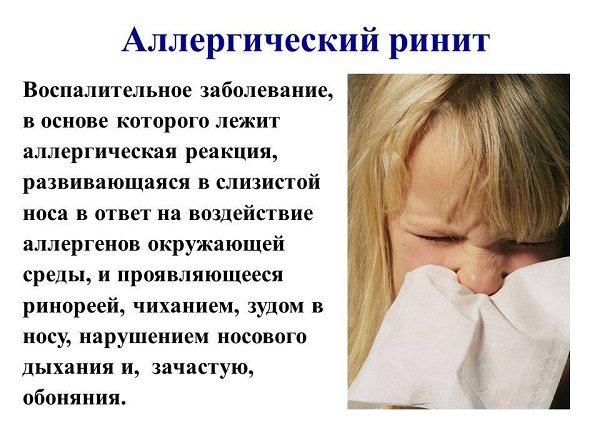
If the cause of rhinitis is allergens, for example, pollen from certain plants during spring flowering, of course, it is better to leave your son or daughter at home until this dangerous period has passed.
Treatment of abnormalities
It is illogical to treat a cough that occurs after a run.
It is important to remove the cause of its occurrence
Bronchial asthma
Asthma is a severe disease of the respiratory tract. It can be called:
- dust;
- cigarette smoke;
- pet hair;
- flowering plants;
- swallowing cold air;
- various chemicals;
- viral infections;
- obesity;
- certain specific smells.
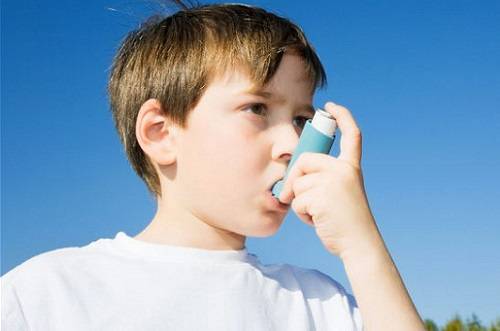
In this case, the baby experiences hoarseness, coughing, and attacks of suffocation. A cough that occurs after crying, running, jumping, or laughing may indicate the presence of bronchial asthma. It worsens in the morning and at night (in the morning immediately after waking up, and at night during a horizontal position).
It is treated with inhalers purchased at a pharmacy. In addition, the child needs special physical activity, the complex of which will be shown by the attending physician, acupuncture, salt mines, etc. Since asthma is classified into mild, moderate and severe, treatment will also vary significantly. The main thing is not to miss that very moment and start treatment on time.
Pneumonia
Doctors usually divide a disease such as pneumonia into the following types:
- viral type pathology;
- bacterial disease;
- fungal type disease.
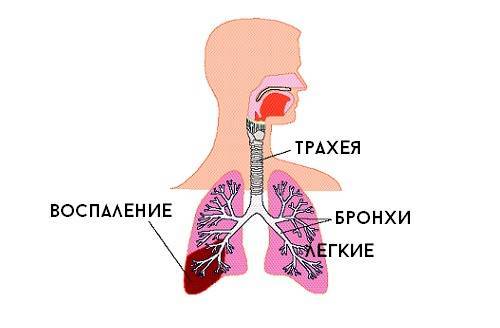
In addition, pneumonia can be unilateral, that is, the affected lobe is only on one side, or bilateral, when both lobes are affected respectively.
- frequent and at the same time dry cough;
- significantly increased body temperature;
- shortness of breath with inability to take a deep breath;
- pallor of the skin.
Pneumonia does not occur on its own; it is rather a sign of improper treatment of a common cold or its absence at all. Therapy consists of antibiotics, special massages, electrophoresis with dexamethasone, and antitussives.
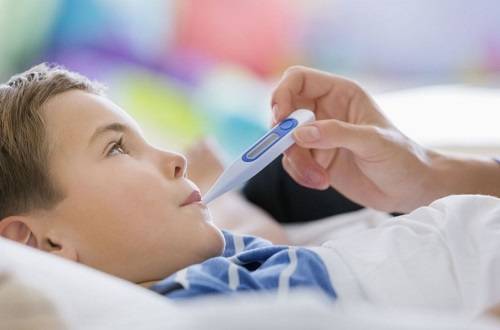
Bronchitis
It appears as a result of complications of ARVI, influenza, hypothermia and is divided into:
- bacterial type;
- viral;
- allergic;
- obstructive.
Treatment is carried out on an outpatient basis, but since this is a viral disease, it will not be treated with antibiotics. After a complete examination and diagnosis, the doctor will prescribe correct and effective treatment. Among them:
- drinking plenty of water;
- taking antipyretic drugs;
- wet air;

It is important to remember that in case of acute bronchitis, inhalation, bathing, and taking expectorants are contraindicated. It is important to remember that wrapping, warming, and using mustard plasters for bronchitis is contraindicated.
Why does the child cough?
Physical activity is one of the important conditions for the normal development of a child’s body. Morning exercises and promotion of various sports have become an integral part of educational work in any preschool and school institutions.
There are a number of other reasons for this malaise:
- Residual manifestation of disease or chronic disease.
- Unfavorable windy or frosty weather.
- A room with a lot of dust or humidity.
- Impaired breathing technique during exercise.
- Cigarette abuse.
If you notice that:
- the child coughs after running, after every lesson or workout, regardless of the location;
- cough occurs with good physical shape and regular exercise;
- the child begins to cough at 150-160 pulses per minute;
then action must be taken.
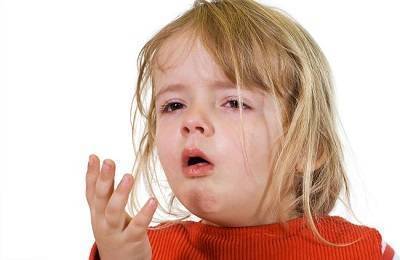
Prolonged coughing attacks can signal diseases:
- of cardio-vascular system;
- respiratory system, including asthma;
- allergies.
As a rule, coughing attacks become harbingers of a chronic disease - asthma. Until the exact cause of the disease is established, all physical activity must be abolished, because due to it the disease can progress quickly. The swelling of the airways becomes greater and their sensitivity to external irritants increases.
When is it normal to cough while jogging?
The Mayo Clinic General Guidelines for Exercise and Disease suggest using the above/below neck criteria:
Above the neck. Training usually goes well if all the symptoms are concentrated above the neck. This may include nasal congestion, runny nose, sneezing and sometimes a dry cough;
Below the neck. It is necessary to take a break from jogging and any physical activity for a while if there are symptoms below the neck. These include difficulty breathing and wheezing, a harsh or productive cough (with phlegm and mucus), diarrhea and abdominal, chest or lower back pain.
However, even if all signs are above the neck, consider cutting back on your workout. Replace an intense run with a regular walk and don't try to beat the record you set while feeling good.
Why does a child or an adult cough after running?
A child may develop a cough after running for various reasons. The simplest of them is when a child is in “room” care without knowing what the street is: a bus takes him to school, from school, at home he is busy with lessons, studying social networks. Concerned about this situation, parents suggest that the boy or girl take up running - the simplest sport. But an untrained body responds to the need for even a short run with difficulty breathing and often coughing.
A severe cough after running is caused not only by irritation of the respiratory tract, which occurs due to the unusually increased pressure of the stream of inhaled and exhaled air. This is also a huge muscular work, leading to an acceleration of blood movement, to a different distribution than during a calm rhythm of life. Increased blood circulation occurs in all tissues. It is most noticeable on the face, where the skin turns pink or red. This phenomenon is called working hyperemia (plethora).
Increased heart function not only causes increased blood circulation through the vessels. During physical activity, the volume of blood is also mobilized, which in a calm state is not used, but slowly moves in the “settlement” organs, or “depot” (spleen, skin, bones).
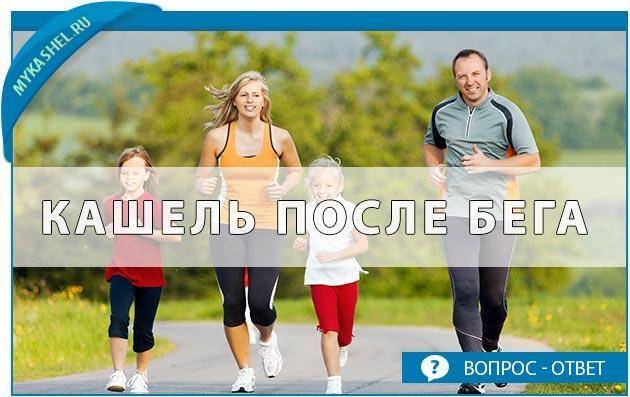
The increased volume of circulating blood requires the opening of small and large vessels that are not used without load (circular or additional capillaries, arterioles and venules).
The rapid movement of this entire mass that has come into motion is perceived by the body as pressure, expansion, expansion. The state of working hyperemia of the respiratory tract is felt as increasing:
- burning;
- combustion;
- sore throat.
If the load continues or increases, the following appear:
- heartbeat;
- dizziness;
- cough;
- lack of air;
- chest pain.
This means that the influx of blood “flooded” the tissues so much that normal metabolism in them became impossible, and the phenomenon of ischemia occurred. This is the name of a condition when the outflow of blood through the veins is sharply hampered, causing toxic waste from organs to accumulate in the tissues. This phenomenon is perceived as pain.
Cough after running in an adult is often even more pronounced than in a child, since the degree of ischemia of the respiratory mucosa is greater due to smoking and other causes.
Causes of cough after exercise
The occurrence of an attack of dry or wet cough after a run can be caused by one or a complex of negative factors. The most common causes of shortness of breath associated with bronchial spasm may include the following:
The child has
Irritation of respiratory receptors by air flow
If a child does not often pay attention to physical education and suddenly decides to put stress on an unprepared body, then the body will perceive too rapid breathing while running as a deviation from the normal state of the respiratory system. The response will be a dry cough that occurs in the middle, at the end or after training. Bronchial asthma
In children suffering from allergic bronchospasm, a dry cough occurs after jogging or other physical activity as a result of the fact that the alveolar space in this category of patients is unstable. After the slightest critical overload, the walls of the bronchi can spasm and, in addition to coughing, a person may also experience a feeling of lack of air. Therefore, children with bronchial asthma are not recommended to run long distances. The best option for getting sufficient physical activity and preventing a coughing attack would be an intense walk over a distance of 2-3 km. Bacterial infections. The presence of chronic foci of inflammation of an infectious or viral nature in the lung tissue and bronchial tree is one of the main reasons why a child may experience an attack of severe dry cough immediately after completing a workout. Bronchial spasm occurs due to the fact that blood circulation in the chest area increases under the influence of physical activity. Additional volumes of blood reach the sites of inflammation, irritation of the affected tissue occurs and a dry cough is provoked. To eliminate this cause, it is necessary to examine the lungs and, if low-grade inflammation is detected, take adequate therapeutic measures.
In adults
- Smoking. Sports and the use of tobacco products are incompatible processes. This causal factor, of course, applies to the adult category of people who smoke and periodically play sports. In this case, an attack of dry cough is an attempt by the body to rid the walls of the bronchi from cigarette smoke and tar that have accumulated in the lungs over many years of smoking. This type of bronchial spasm occurs against the background of abundant blood supply to the organs of the respiratory system as a result of intense physical activity.
- Bronchiectasis. This pulmonary pathology is most often diagnosed in adults who have led an unhealthy lifestyle or have worked in hazardous production conditions for many years. Purulent fluid accumulates in the bronchial sacs, resulting from the destruction of the tissues of the lower respiratory tract. After running, the patient develops a strong wet cough, during which yellow sputum with an unpleasant putrid odor comes out.
- Tuberculosis. This dangerous pulmonary disease reduces the functional activity of the respiratory system to the maximum limit. After even minor physical exertion, the patient is plagued by a severe cough, which can have both a dry and productive form.
- Lungs' cancer. The oncological process in the first stages of its development is always manifested by a slight increase in temperature, the source of which is not possible to determine, as well as attacks of bronchial spasm immediately after running or other physical activity.
- Acute heart failure. Very often in medical practice there are cases when an adult has this pathology of the heart muscle, but in a state of calm the disease does not manifest itself. As soon as intense physical activity occurs, the heart loses the ability to work at such a tense rhythm. As a result, a large volume of venous blood accumulates in the lungs, which impairs the gas exchange process. The stronger the pressure on the lung tissue, the more often the urge to cough occurs.
Causes of cough after running
The nature of coughing attacks is determined by individual indicators of the body - previous diseases, the presence of pathologies and bad habits.
The most common causes of coughing attacks after running:
- Insufficient preparation for the load. Due to lack of exercise, a person with poor physical performance develops shortness of breath, and as a result, a cough begins. While jogging, you need to use the correct breathing technique: air should enter through the nose and be released through the mouth. This will reduce the likelihood of coughing to a minimum.
- Bad habits, in particular alcohol and smoking. Cigarettes and running are fundamentally incompatible due to their effect on the respiratory tract. A smoker's lungs have a weak ability to adapt to physical activity. The cough is intense and muffled. This is due to a lack of oxygen with increased activity. The only way to get rid of the disease is to stop using tobacco and alcohol.
- High load level. Even a trained body has a reserve of endurance. If running has reached an intense stage, you need to give yourself periodic breaks and not exhaust your body. After the strength is exhausted, the person’s condition worsens, and a cough may indicate that it is time to stop exercising.
- Increased activity of the bronchi due to their irritation. The cause of the pathology must be determined by a doctor. If you suspect this symptom, you need to go to the hospital for advice and take a test with bronchodilators.
- Presence of respiratory tract diseases. If a person is undergoing treatment for an illness or has recently recovered, a cough may indicate that exercise has started too early. The body needs a recovery period when physical activity is kept to a minimum.
- Bronchial asthma. It manifests itself in the form of attacks of suffocation during physical activity, and then progresses to the coughing stage. It lasts about half an hour, after which it stops.
- Heart failure. This may be due to the outflow of lymph due to the fact that the heart cannot cope with the volume of blood. This can also be caused by treatment with drugs that constrict blood vessels and irritate the throat. Cough in heart failure is dry.
- Oncological disease. If you have a diagnosis, it is better to coordinate training and heavy loads with a specialist.
- Tuberculosis. In this case, cough occurs not only after running, but also as a result of any physical activity.
- Cold air. If jogging takes place outside, a cough may occur due to low temperature. This is its most likely cause if the more serious problems outlined above are excluded.
Only a doctor can determine the sources of cough in the presence of diseases.
Not a fight, but an influence
The cause of cough during ARVI is inflammation, which disrupts the functions of the ciliated epithelium lining our airways. Normally, the cilia of this tissue perform oscillatory movements, due to which mucus and phlegm move to the exit rather than accumulate in the bronchi. But when the operation of this mechanism is disrupted, an additional method of cleansing the lungs is activated - coughing. It is with its help that sputum, microbes, and foreign particles are removed from the respiratory tract.
Therefore, a cough should be suppressed with special drugs (“Sinekod”, “Glauvent”, “Glaucin”) only if it is dry, debilitating, strong and constant - for example, it interferes with normal sleep, threatens the development of an abdominal hernia (there is such a risk if Abdominal muscle tone is weakened). In all other cases, there is no need to fight the cough, but you need to make it as effective as possible. There are medications for this, primarily mucoactive drugs. If necessary, if a general blood test confirms the presence of a bacterial infection (increased white blood cells), the doctor may prescribe antibiotics.
However, the cause of cough during ARVI is damage not only to the bronchi, but also to the nasopharynx (the so-called “postnasal drip”). Most often this problem is caused by rhinitis, adenoiditis and sinusitis, especially chronic ones. Mucus drains down the back of the throat, which stimulates a cough. In this case, it is necessary to treat a runny nose (first of all, regularly rinse the nose), and from cough medications, choose those that have a mucoregulatory effect.
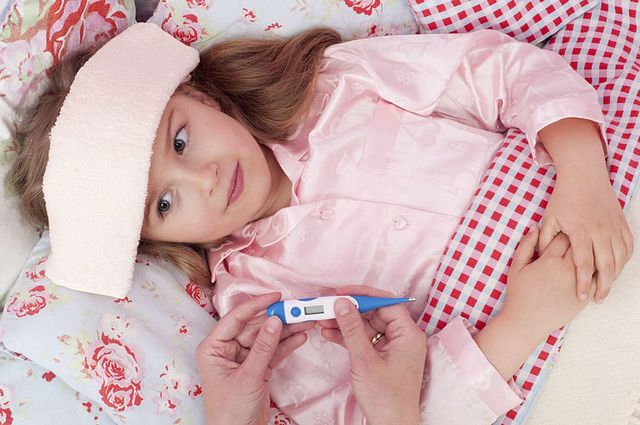
Do not treat ARVI. Why antiviral drugs and antibiotics are ineffective Read more
Prevention measures
Many parents make a very common mistake that can lead to serious and even fatal consequences, protecting their child from almost any physical activity. Parents can significantly help their child, who is weakened for one reason or another, in quite accessible ways that are not at all related to medical practice:
- ensuring a constant flow of fresh air at a comfortable temperature;
- exclusion of alcohol fumes and the smell of tobacco smoke in the living room;
- regularly maintaining cleanliness in the house, fighting fungus, mold, and other breeding grounds for germs and bacteria;
- removal of factors that cause allergic reactions (flowers, pets, sources of strong organoleptic reactions).
These measures often require parents to make certain sacrifices related to habits, preferences and lifestyle. But for any normal person, these sacrifices are of absolutely insignificant value compared to the health, and sometimes even the life of their own child.
We must not forget that coughing after running is an alarming signal. And more specifically, there is a direct and indisputable reason to immediately show it to a qualified medical specialist!
Is it possible to walk with a cough?
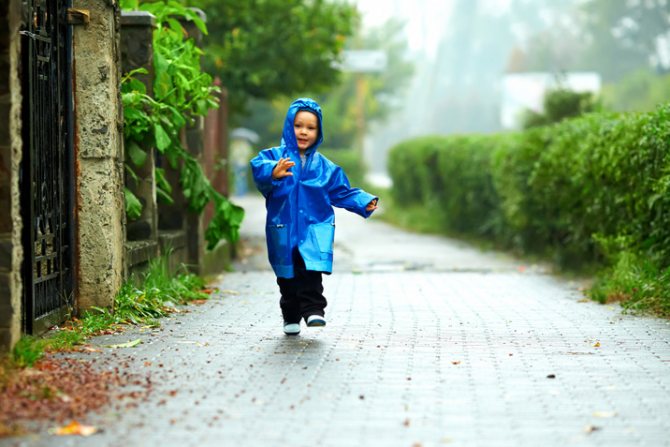
note
If it is not possible to go outside, you need to ventilate the rooms of the house as often as possible, enriching the room with oxygen. A daily walk when you have a cold is necessary at any age; it is part of therapy.
The child is healthy, but coughs at night and when he runs
Drink herbal teas in a light form while making a diagnosis, of course not a panacea, but a good help. True, the situation really looks like a protracted illness. And of course, walk more often, if you don’t have a fever, take a bath. Since the nasopharynx needs good hydration so that it also continues its protective functions. And of course milk at night, if possible.
In general, a cough after a cold can last for several weeks and these are not my words, but the words of a doctor
Mine has the same thing now, although he only recovered 4 days ago. We had a blood test - good, no complications. Yes, I cough myself - I was sick with him, it’s phlegm that comes out. In general, I read that this is good, the lungs should be cleansed. So +17-19 in the room, higher humidity, put a pillow under the mattress, when someone coughs - warm drink, some valerian and everything will be fine)
Maybe something is bothering you in your throat?
I had exactly the same thing as a child, but it was whooping cough
When does he run? No suspicion of asthma?
Mine had pneumonia in February. Still coughing. We breathed everything we could, it’s still there... I’m thinking maybe I should take a walk in the fresh air more often. But of course we don’t have night attacks.
After pneumonia, even an adult can have a cough for up to six months, I know firsthand. Walks are a good idea, teas with chamomile, plantain and elecampane (very carefully, of course). I make a weak solution for my child during illness (it tastes like a light, barely perceptible shade of herbs), sometimes I make it like tea with sugar. Or we drink dried fruit compote with the addition of rose hips. The main thing is not to overdo it.
Place the pillow higher. Is your voice hoarse in the morning? cough without tears? I would do inhalations for prevention.
The cough may persist for up to 2 weeks. At one time I was also worried, I ran to the doctor to listen, that’s what she said.
We once had a cough for a month, and it was precisely when I was lying down. Inhalations with Lazolvan and then just saline helped. Snot flows down the back wall, which also sometimes provokes a cough at night.
source
Rules for organizing a walk when you have a runny nose
For a speedy recovery of the child, it is necessary to properly organize a walk.
- Clothes should be comfortable. Don't overwrap your baby. Dress it according to weather conditions. He should not be hot or cold.
- Try to spend quiet time outside. If a child has rhinitis, it is not recommended to run or jump. A quiet walk in the park in the fresh air will be useful.
- It is better to wait until you have completely recovered from communicating with peers and visiting places with large crowds of people. There is a risk that the child will infect others, and also catch some kind of infection, since with rhinitis, immunity is reduced.
- Cancel your walk if it is raining or wet or windy outside. Such weather conditions are unfavorable for inflamed mucous membranes, and, on the contrary, lead to copious mucus secretion.
- Don't walk for a long time. In good weather, in summer 1 hour will be enough for a walk to be beneficial. In winter, when it’s frosty, staying outside should be limited to 20–30 minutes.
- Carefully clear the child's nasal cavity of mucus before going outside. This will allow him to breathe freely through his nose, otherwise breathing will be through his mouth, which is unacceptable in the frosty winter.
The younger the baby, the more beneficial the walk is for him. For babies, walking is essentially just sleeping in the fresh air. As the child gets older, the number of aspects that should be taken into account before going for a walk increases.
Features of cough treatment depending on its cause
What to do if a persistent cough does not go away for a long time and lasts for several weeks? Parents buy all kinds of mucolytic drugs, but there is no effect from their use.
When a child has been coughing for more than a month, hospital treatment is often required, for example, for acute bronchitis or whooping cough. Such diseases occur with an increase in body temperature and develop rapidly, which can lead to serious complications.
For therapy to bring quick results, taking medication alone is not enough; you need to carry out complex treatment, which includes physical therapy, daily inhalations, warming compresses, and massage. How long the disease will last will depend on all these manipulations.
Drug therapy
The course of drug therapy depends on the cause of the prolonged cough. For example, if the pathological condition has developed against the background of an allergic reaction, the doctor will additionally prescribe antihistamines, and in case of a bacterial infection, antibiotics. The course of therapy usually lasts from a week to 10 days.
| Group of drugs | Therapeutic effect | Name of medications |
| Antibiotics | They have an anti-inflammatory effect. Destroy viruses and bacteria and prevent their reproduction. |
|
| Antihistamines | Inhibits the development of an allergic reaction, relieves swelling of the respiratory tract. |
|
| Hormonal | Hormones are indicated for complicated disease (acute or obstructive bronchitis); such medications are prescribed for inhalation. Restores breathing and eliminates shortness of breath. |
|
| Mucolytics | Recommended for the transition of a dry cough to a productive one. Expectorants thin the mucus and promote its rapid elimination. | For dry cough:
|
| Multivitamins | Increases immunity and body resistance. |
|
Inhalations and compresses
Inhalations help accelerate the discharge of sputum and dilute it. After the procedure, breathing becomes much easier, coughing attacks occur less frequently.
The medicine is sprayed using a special device - a nebulizer. When you inhale, it enters the bronchi and begins to actively act, inhibiting inflammatory processes. For inhalation, saline solution and medicine, for example, Ambrobene, are used.
Compresses that are applied before bedtime are anti-inflammatory, analgesic and warming agents. They are applied to the chest area. However, such procedures are not recommended for newborns and children under one year of age. For compresses use:
- saline, soda or alcohol solution;
- mineral water;
- infusions of medicinal herbs;
- special ointments (turpentine ointment, Doctor Mom, Breathe, etc. (see also: does turpentine ointment help with coughs for children?).).
Massage
To improve mucus discharge and prevent the development of complications, young children need to have a drainage massage. It is better if it is carried out by a qualified doctor, but when this is not possible, you can handle it yourself.
For the procedure, use special oil or baby cream. The child lies on his stomach, after which massaging movements are performed:
- light stroking;
- rubbing/kneading;
- vibration pat.
Folk remedies
If a long cough does not go away and nothing helps, you can treat your baby using traditional medicine recipes. Before using them, consult your doctor to prevent complications. Popular folk remedies:
- rubbing with honey, goat or badger fat (more details in the article: how to give a child badger fat when coughing?);
- wheat bran boiled with calcined sugar - taken orally hot several times a day;
- make an infusion of raisins (50 g per 1 liter of water), add 60 ml of onion juice to it, take orally throughout the day;
- Boil chopped onions with honey and sugar, consume the mixture internally, 1 tbsp. 3 times a day.
What is a cough

This is not only the body’s defense mechanism against any external influence, but also a short, fixed exhalation with simultaneous tension of the entire apparatus of the respiratory system. Coughing after exercise is not uncommon. The respiratory apparatus reacts to body tension with a cough reflex.
It is expressed in irritation of certain areas of the respiratory system by the vagus nerve. Under this influence, a nerve impulse enters the area of the medulla oblongata responsible for coughing, from where a complex reaction begins, forming a reflex process.
It can be caused by impulse and stimulation of the central nervous system. The intensity depends on the strength of the irritating factor. If a foreign body enters the respiratory tract, it is removed by coughing. After colds and pulmonary diseases, the reflex helps get rid of sputum, in which a lot of bacteria accumulates
That's why it's so important to get rid of it
Types of cough.
There are types - acute and chronic, by sound - dull and voiced, by secretions they distinguish between dry and wet:
- With dry cough, sputum is not produced and its characteristic symptom is the desire to constantly cough. If an attack begins suddenly and does not end, then there is no need to try to cough intensively at any cost. If you exert too much stress, you can damage small blood vessels and temporarily lose your voice.
- Wet is productive. In its presence, sputum is formed, which accumulates in the bronchi. Together with the cough, it is expelled, removing bacteria accumulated in the lungs.
- In the acute form, a person coughs constantly, without interruption. Accompanies colds.
- The chronic form appears after 3 months of presence. It is characterized by periodicity: after a period of absence, it appears again and takes on an acute appearance.
What to do if you have a cough.
If an attack begins, you should find out the cause of its occurrence and then take corrective measures. To do this, you must visit a doctor. He will order an examination and, after establishing the cause, prescribe treatment.
Although coughing is a protective reaction of the body, it can also be dangerous. For example, transition to a chronic form. It is very difficult to get rid of this type. During a persistent attack, there is a strong strain on the entire respiratory system and upper body. Strong pressure can cause rupture of the blood vessels in the eyes.
Cough disrupts the normal blood circulation of a pregnant woman. Spasms block the flow of nutrients to the fetus and provoke placental abruption. All this negatively affects the condition of the fetus and can lead to miscarriage.
Is it possible for a child with sinusitis to walk outside?
In the acute course of the disease, patients of all ages are advised to remain in bed.
But with normal body temperature, absence of purulent discharge and overall satisfactory health, walking in warm, dry weather is quite acceptable.
Attention
In the cold season, and especially in frost, treatment of sinusitis requires a complete ban on staying outside.
With inevitable exposure to cold, vasoconstriction occurs, which negatively affects the condition of the respiratory system.
In addition, being in the cold requires increased energy expenditure from a person in order to maintain normal body temperature.
The body, weakened by an infection caused by sinusitis, has to expend additional energy. In any case, an otolaryngologist will help parents make the right decision.
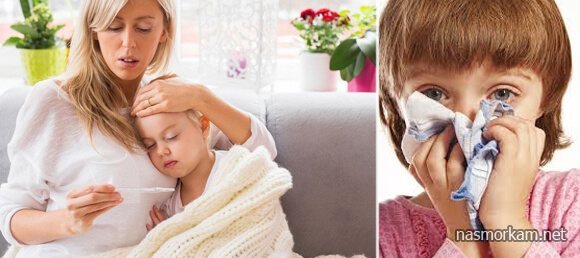
To
Reasons for rejection
There can be many reasons why symptoms such as cough and shortness of breath intensify:
- the flow of air may cause irritation of the mucous membranes, which in turn provokes a dry cough;
- asthma can occur with cold air flow;
- for pneumonia, acute bronchitis;
- for lung cancer;
- with tuberculosis, the cough is initially dry, and subsequently with sputum discharge.
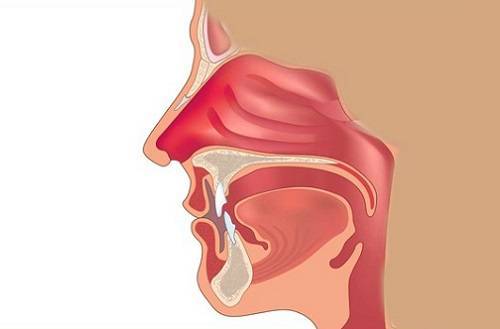
During jogging, if they are irregular, the child’s body receives a large load on all organs, especially the respiratory system. With infrequent, even short runs, shortness of breath and, in fact, coughing occur. From the first grades, physical education lessons teach you how to breathe correctly: you need to inhale through your nose and exhale through your mouth.
Sometimes the cough gets worse after physical activity due to bronchial irritation. You can find out about this diagnosis only after evaluating the results of certain tests. After a cold, the reflex may also increase during running.
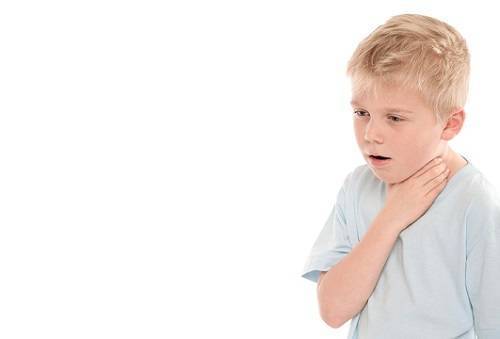
A possible cause of deviation may be a dangerous disease called asthma. With this diagnosis, the child’s cough begins during physical activity. In addition, with asthma, running children experience shortness of breath.
There are other causes of cough.
Magnesium deficiency
A lack of a trace element such as magnesium can lead to a burning sensation in the lungs, as well as increased coughing during and after running. Magnesium, together with calcium, allows muscles to contract properly. Its deficiency leads to spasm of the respiratory tract.
Past colds
If a young athlete has recently suffered from a cold or infectious disease, he may experience shortness of breath and other accompanying signs of malaise while running. In order for sports to bring exceptional benefits, you need to consult a doctor to find out whether it is possible to continue exercise or whether it is better to abstain from it for a while.
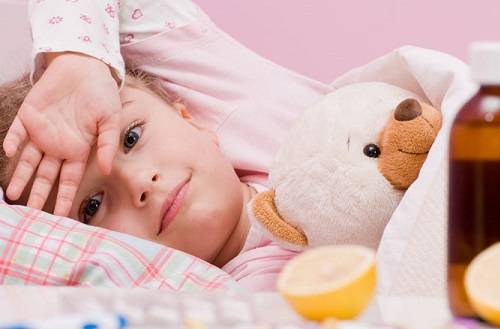
Negative consequences
If you do not follow the rules of staying in the fresh air, especially in winter weather, you can get complications and achieve the opposite effect - a deterioration in the baby’s condition.
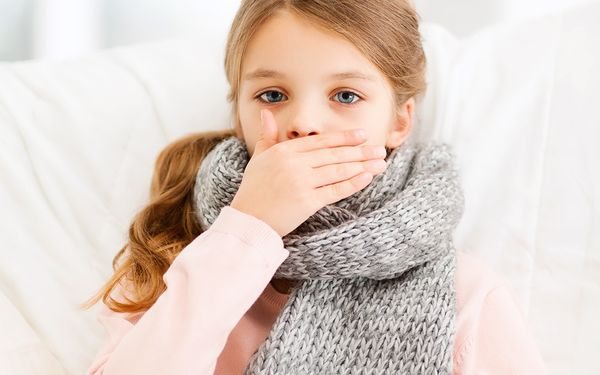
This manifests itself in the following:
- repeated increase in temperature to high numbers;
- recurrence or worsening of cough and runny nose;
- transition of the disease to a severe form.
To avoid negative results, it is important to listen carefully to your pediatrician’s advice and carefully follow the recommendations for caring for your child.

